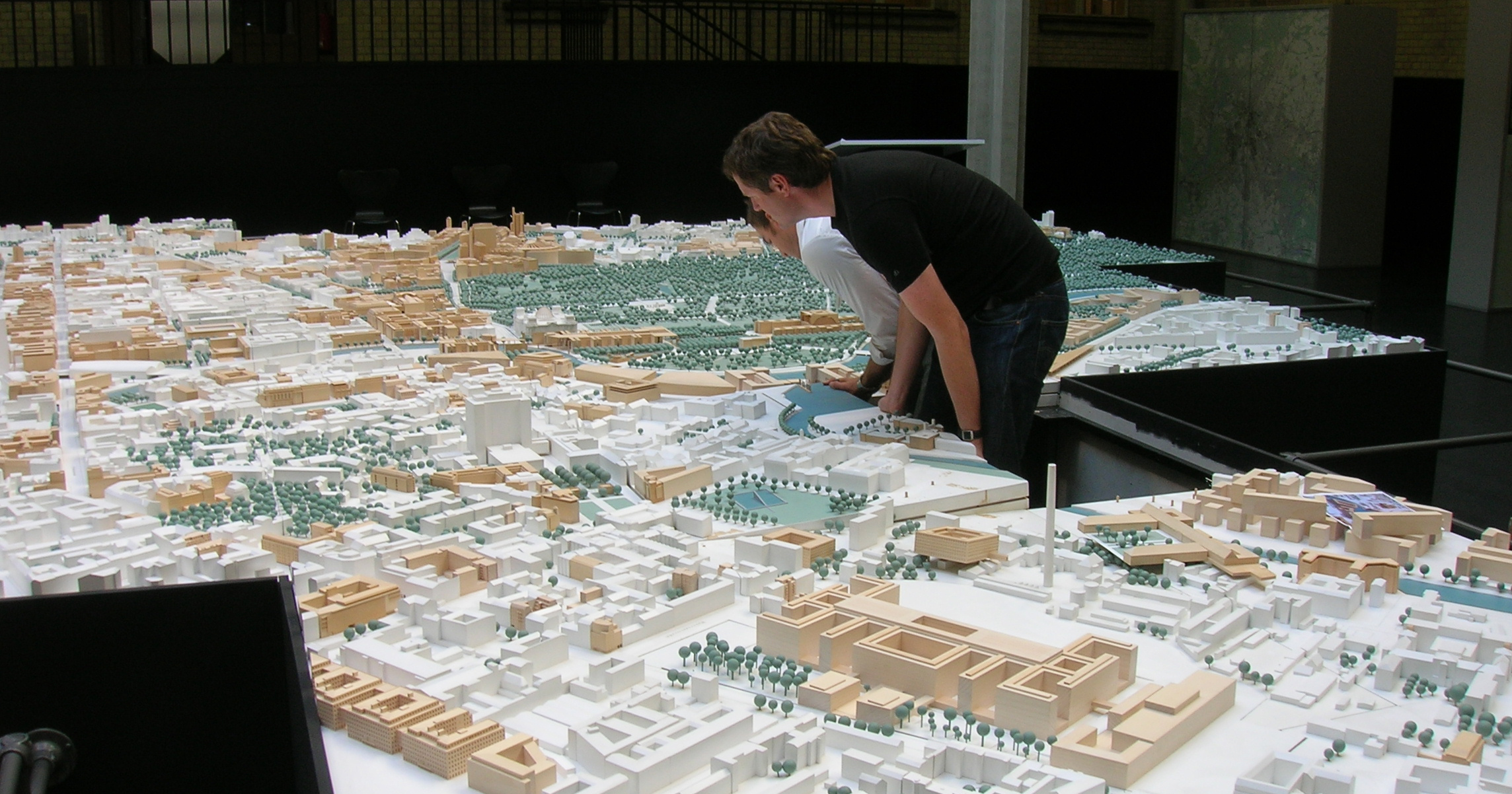We are thrilled to announce the winners of Architizer's inaugural Vision Awards, the world’s biggest awards program dedicated to the art of architectural representation. Sign up to receive future program updates >
Heatherwick Studio straddles the line between architecture and art across all its projects. Founded by Thomas Heatherwick in 1994, the design studio quickly became known for inventive work across furniture, interiors, sculpture, architecture, and more. The team now includes over 200 designers based in Central London. As the studio states, they create “buildings, spaces, master plans, objects and infrastructure” in cities across the world.
Self-proclaimed practical inventors, Heatherwick Studio and their work centers on the idea of image-making. With grandiose ideas, many of which have never been built before, the team relies on images and renderings to illustrate possible futures. Over the years, pavilions, architecture, and landscape architecture projects were presented with renderings made to echo the final, built reality. The following projects showcase Heatherwick’s work by comparing these illustrations with finished photography. Together, they show how the studio remains committed to design and continues to experiments with new techniques and forms.
1000 Trees
Shanghai, China
Jury & Popular Choice Winner, 11th Annual A+Awards, Shopping Center
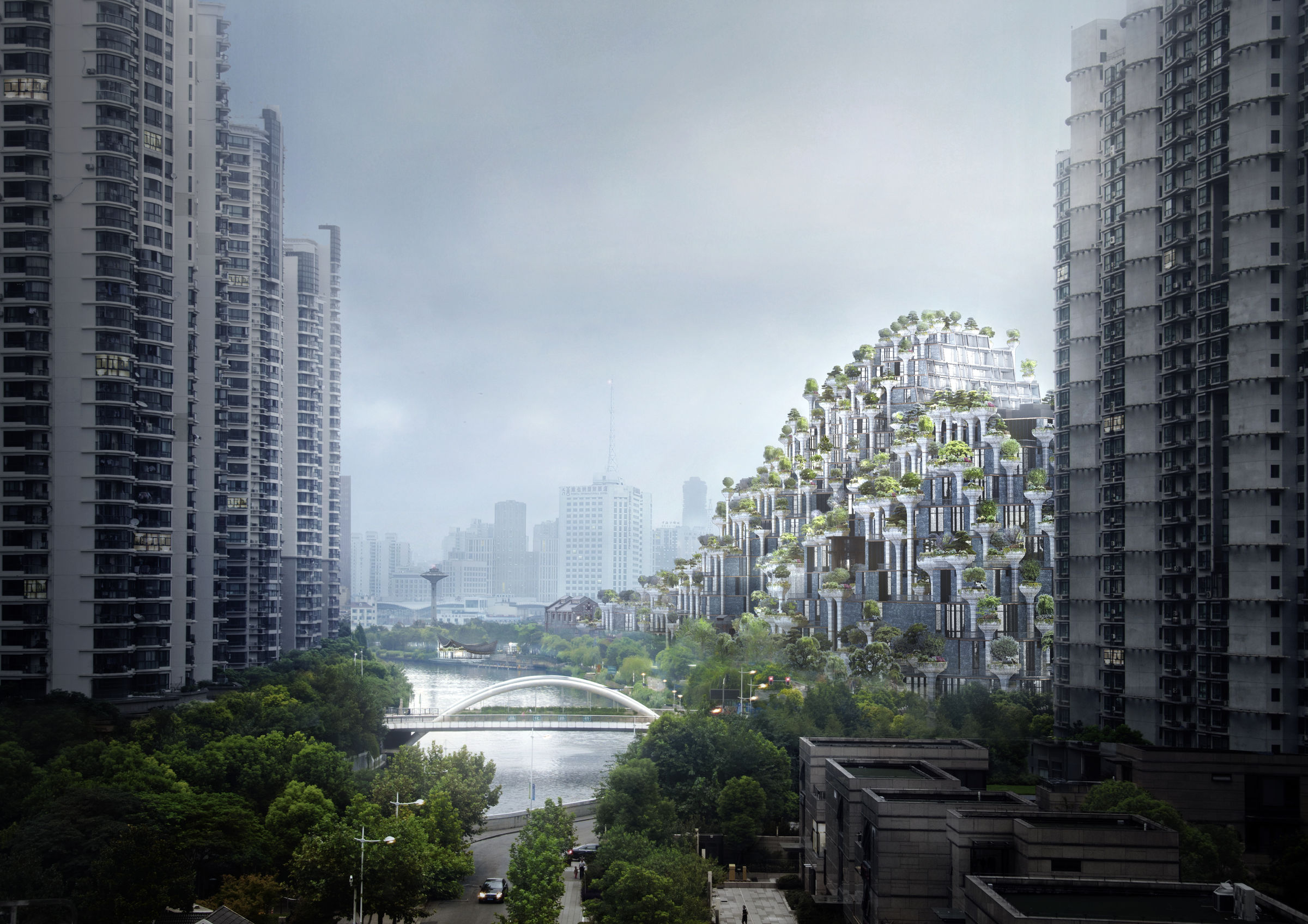
 1,000 Trees was made to be two forest-capped mountains rising from the waterfront in Shanghai. The new, mixed-use development was built on an expansive site bounded by a river, the M50 art district, and a park. The project is inspired by the idea of making cities into social spaces by breaking down the monolithic scale of a typical retail development into human-scale spaces. Though the material expressions evolved throughout the course of the project, the initial design with its iconic structure and planters is seen in both the initial renderings and the finished building.
1,000 Trees was made to be two forest-capped mountains rising from the waterfront in Shanghai. The new, mixed-use development was built on an expansive site bounded by a river, the M50 art district, and a park. The project is inspired by the idea of making cities into social spaces by breaking down the monolithic scale of a typical retail development into human-scale spaces. Though the material expressions evolved throughout the course of the project, the initial design with its iconic structure and planters is seen in both the initial renderings and the finished building.
The studio designed the project as “a place that brings together nature, commerce and wellbeing, turning an ex-industrial site into a new destination exploring the powerful relationships between art, landscape and architecture.” The project includes 166 retail units and 63 food and beverage units; the mall and development was made to appeal to various demographics. Over 1,000 trees and 250,000 plants cascade across the structures, creating a distinct micro-climate in Shanghai.
Maggie’s Leeds
Leeds, United Kingdom
Jury & Popular Choice Winner, 9th Annual A+Awards, Hospitals & Healthcare Centers

 Maggie’s Centres are places where people with cancer, and their friends and families, can go to find free practical and emotional support. Heatherwick Studio was commissioned to design a new centre at St James’s University Hospital in Leeds. The brief was to create “a home that people wouldn’t dare build for themselves” to welcome an expected 110 visitors each day. The studio set out to make a space that would invite people inside and to create a place that felt warm and supportive.
Maggie’s Centres are places where people with cancer, and their friends and families, can go to find free practical and emotional support. Heatherwick Studio was commissioned to design a new centre at St James’s University Hospital in Leeds. The brief was to create “a home that people wouldn’t dare build for themselves” to welcome an expected 110 visitors each day. The studio set out to make a space that would invite people inside and to create a place that felt warm and supportive.
Over time, and after some design changes, the renderings came to closely resemble the finished project. The site chosen for the new Centre was the last patch of greenery at the hospital — a grassy hill next to the car park, bounded by roads on two sides and surrounded by large buildings. The pillars of support at Maggie’s are the counseling rooms, so these were placed, like three pavilions, at different levels to support the roof. The space between them became the heart of the Centre, with views into each area.
Little Island
New York, NY, United States
Jury Winner, 10th Annual A+Awards, Public Parks and Green Spaces

 Little Island was a long time coming, but the finished park absolutely echoes much of the original design ideas. The new public park shelters three new performance venues on the Hudson River. Designed as a haven for people and wildlife, it was made to be a green oasis, as seen in the initial renderings. The project is held above the water by sculptural planters, and located just a short walk across a gangplank from Manhattan’s Lower West Side.
Little Island was a long time coming, but the finished park absolutely echoes much of the original design ideas. The new public park shelters three new performance venues on the Hudson River. Designed as a haven for people and wildlife, it was made to be a green oasis, as seen in the initial renderings. The project is held above the water by sculptural planters, and located just a short walk across a gangplank from Manhattan’s Lower West Side.
The design team saw an opportunity to rethink what a pier could be. The starting point was not the structure, but the experience for visitors: the excitement of being over the water, the feeling of leaving the city behind and being immersed in greenery. In contrast to the flat streets of Manhattan, the design team wanted to create a new topography for the city, which could rise up to shape a variety of spaces.
Learning Hub, Nanyang Technological University
Singapore

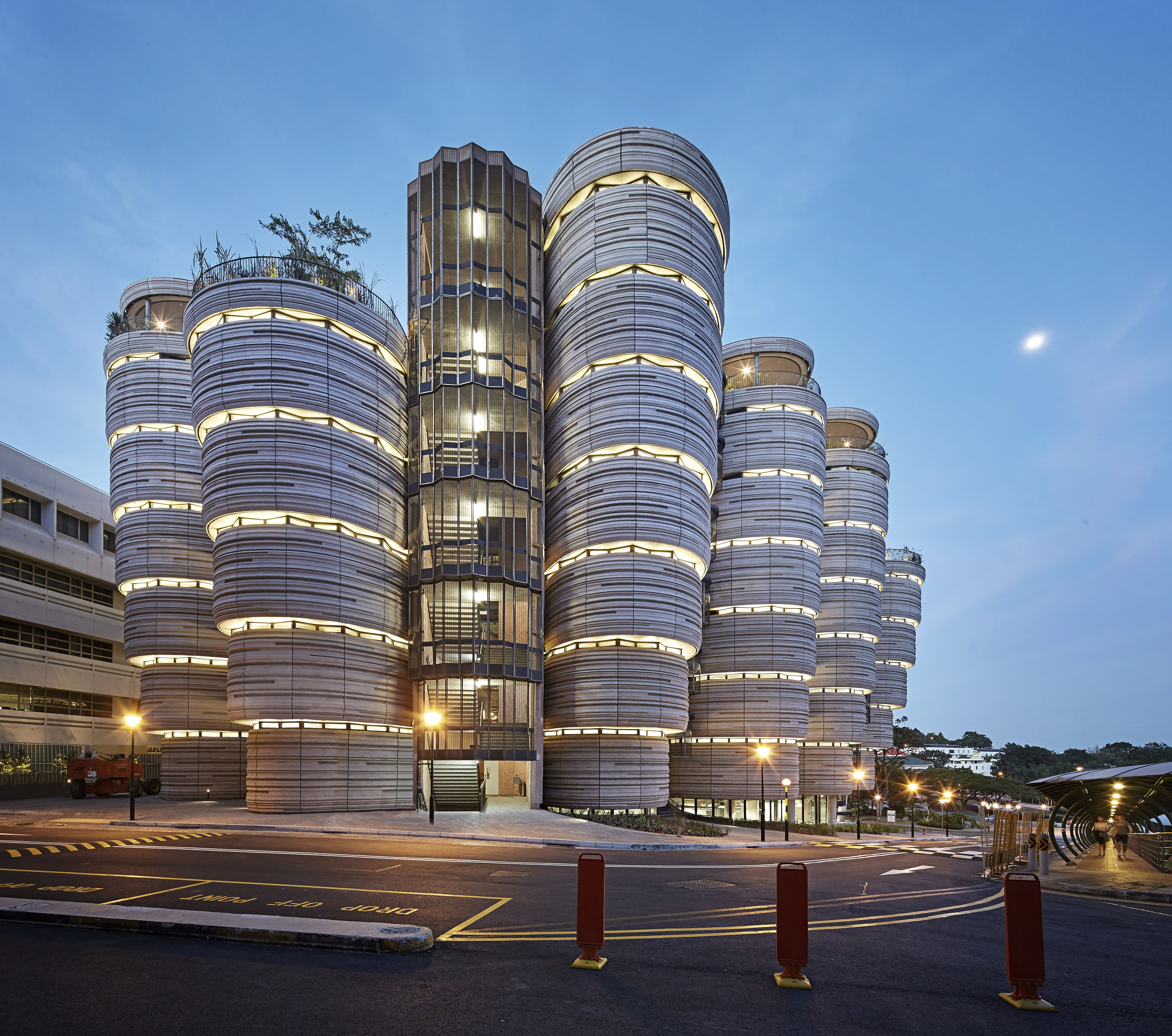 As part of NTU’s redevelopment plan for the campus in Singapore, the Learning Hub was designed to be a multi-use building for students. The final project directly correlates with renderings of the design. As the team explains, instead of the traditional format of an educational building with corridors linking box-like lecture rooms, the university asked for a unique design better suited to contemporary ways of learning.
As part of NTU’s redevelopment plan for the campus in Singapore, the Learning Hub was designed to be a multi-use building for students. The final project directly correlates with renderings of the design. As the team explains, instead of the traditional format of an educational building with corridors linking box-like lecture rooms, the university asked for a unique design better suited to contemporary ways of learning.
The Learning was envisioned as a structure that interweaves both social and learning spaces for casual and incidental interaction between students and professors. Twelve towers, each a stack of rounded tutorial rooms, taper inwards at their base around a public central atrium. The rooms in turn open onto the shared circulation space around the atrium, interspersed with open spaces and informal garden terraces, allowing students to be visually connected while also leaving space to linger, gather, and pause.
Bombay Sapphire Distillery
Hampshire, United Kingdom
Jury & Popular Choice Winner, 2015 A+Awards, Factory / Warehouse
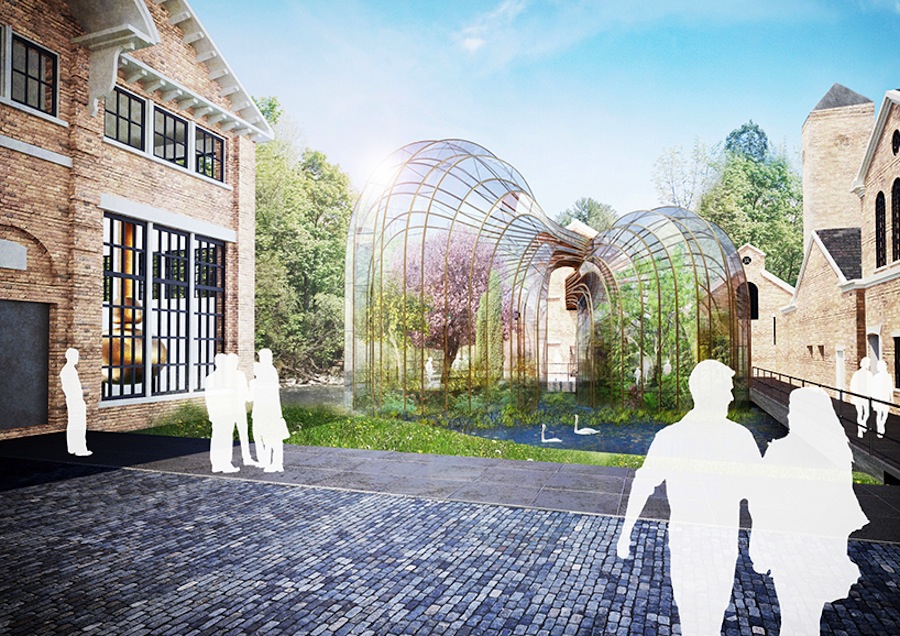
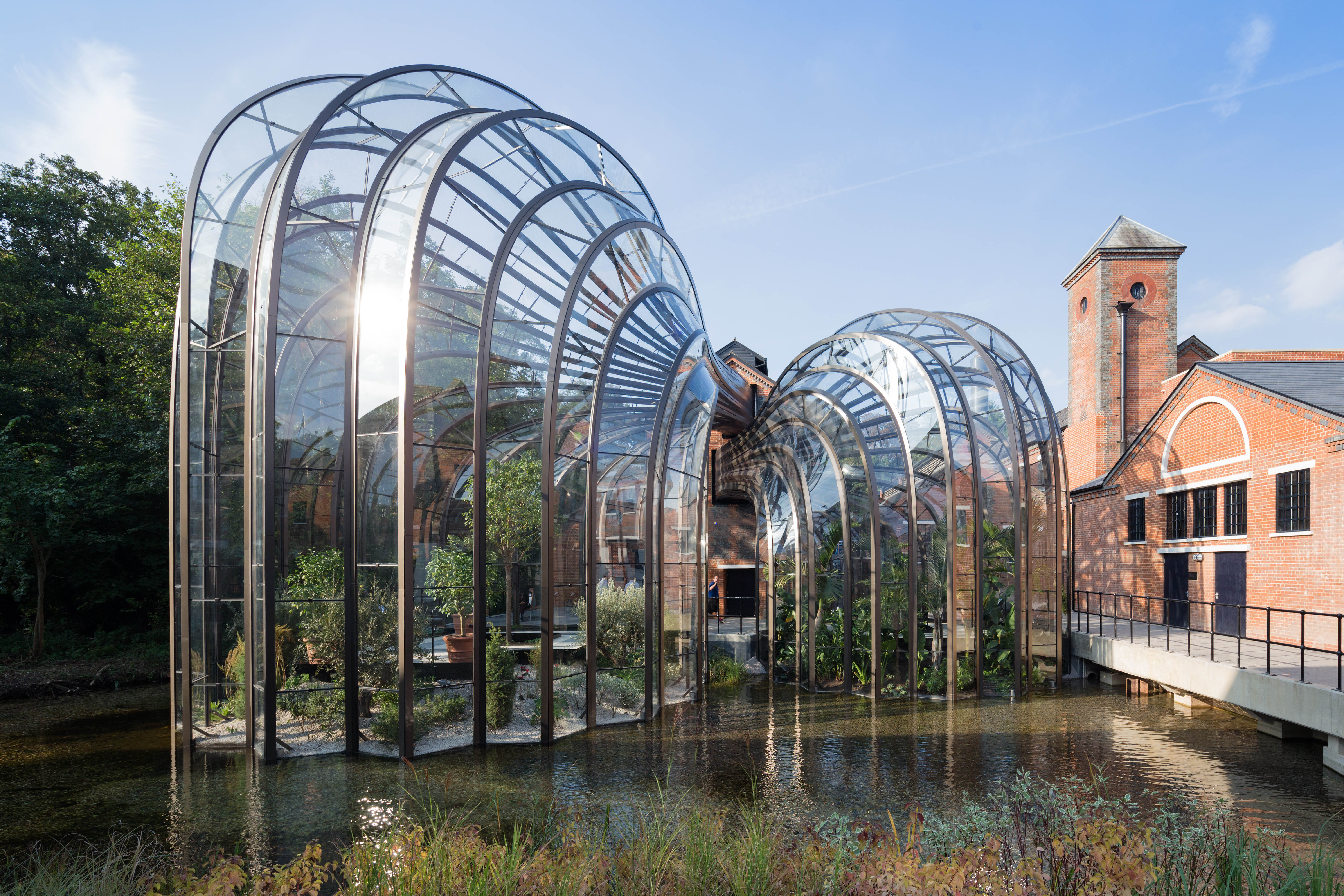 Working with the gin-maker Bombay Sapphire, Heatherwick Studio was commissioned to create the company’s first in-house production facility. A masterplan was proposed with two new glasshouses to grow specimens of the ten exotic plant species used in the Bombay Sapphire distillation process. These glasshouses were unique; one was made with a humid tropical environment, and the other, a dry temperate Mediterranean climate. These two glasshouses can be seen in the early renderings of the project.
Working with the gin-maker Bombay Sapphire, Heatherwick Studio was commissioned to create the company’s first in-house production facility. A masterplan was proposed with two new glasshouses to grow specimens of the ten exotic plant species used in the Bombay Sapphire distillation process. These glasshouses were unique; one was made with a humid tropical environment, and the other, a dry temperate Mediterranean climate. These two glasshouses can be seen in the early renderings of the project.
Formerly a water-powered paper mill, the site contained more than forty derelict buildings, many of historical significance, which have been regenerated and restored as part of Heatherwick Studio’s master plan. As the studio explained, central to the development of the master plan was the River Test, which was previously almost invisible, contained within a narrow high-sided concrete channel and largely covered over as the site had intensively developed over many years.
UK Pavilion
Shanghai, China
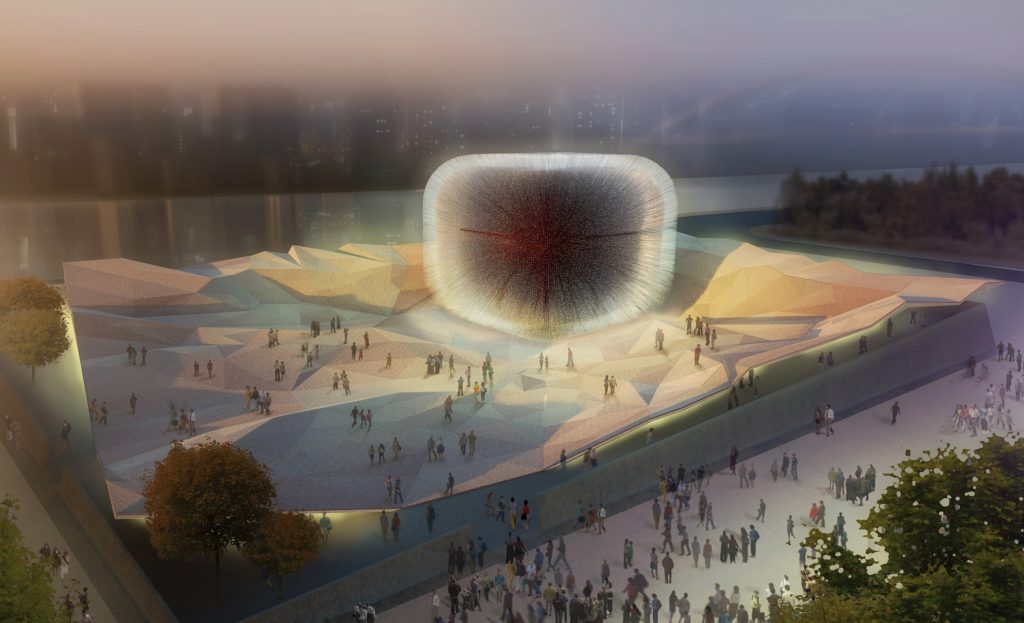
 Few projects in Heatherwick’s portfolio are as iconic as the UK Pavilion from 2010. Following a tradition that began with the Great Exhibition of 1851, the World Expo is a vast international fair in which countries participate by creating themed pavilions, representing their nation’s technology, culture and achievements. For the United Kingdom’s pavilion, the site was the size of a football pitch. The team set out to make “one powerful thing with simplicity and clarity” in an open landscape.
Few projects in Heatherwick’s portfolio are as iconic as the UK Pavilion from 2010. Following a tradition that began with the Great Exhibition of 1851, the World Expo is a vast international fair in which countries participate by creating themed pavilions, representing their nation’s technology, culture and achievements. For the United Kingdom’s pavilion, the site was the size of a football pitch. The team set out to make “one powerful thing with simplicity and clarity” in an open landscape.
The team ended up making a building that would “be a manifestation of its content” with a textural landmark and focal object. They wanted the building’s façade to behave like grass in the wind. In turn, for the future-gazing expo, they choose seeds as a symbol of potential and promise. The result is the Seed Cathedral, a box that measured 50 feet (15 meters) high and 30 feet (10 meters) tall. From every surface protruded silvery hairs, consisting of 60,000 identical rods of clear acrylic which extend through the walls of the box and lift it into the air. While it was difficult to render the silvery rods, the final object and landscape echo the original design intent.
We are thrilled to announce the winners of Architizer's inaugural Vision Awards, the world’s biggest awards program dedicated to the art of architectural representation. Sign up to receive future program updates >





 Bombay Sapphire Distillery
Bombay Sapphire Distillery  Learning Hub, Nanyang Technological University
Learning Hub, Nanyang Technological University 